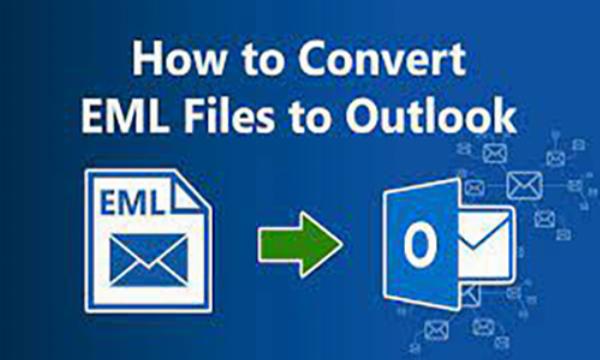How to Create PST from EML Files? – 4 Easy Solutions

Strong 8k brings an ultra-HD IPTV experience to your living room and your pocket.
While it is true that Outlook does not have a direct option to import .eml files, there are technical solutions available to convert EML files to PST format for use in Outlook. One common method is to use third-party tools or software that can convert EML files to PST. These tools are designed to facilitate the conversion process and make it easier for users to import their emails into Outlook. By converting EML files to PST, users can then easily import them into Outlook 2019, 2016, 2013, 2010, and other versions. It is important to choose a reliable and reputable tool to ensure a smooth conversion process and compatibility with Outlook.
How do I create PST from EML files?
While it is possible to convert EML files to PST format using manual methods such as Windows Live Mail, MS Outlook, and Outlook Express, there are limitations and potential drawbacks to these solutions. These manual methods may not always be efficient or reliable, and they may not fully address all the complexities involved in the conversion process. To overcome these challenges and ensure a more seamless conversion, opting for professional software specifically designed for creating PST files from EML files is recommended. These tools are often more efficient, user-friendly, and reliable in converting EML files to PST format for use in Outlook. By using professional software, users can streamline the conversion process and avoid potential irregularities that may arise from manual methods.
Manual Free Methods to Create PST from EML Files
As previously discussed, the EML file format is compatible with multiple email applications. Therefore, we'll outline the manual processes for creating a PST file from both Windows Live Mail (WLM) and Outlook Express emails. Before initiating the process, ensure that Outlook application is installed on your system. Follow the steps below to generate a PST file from emails using WLM or Outlook Express:
Method 1: Creating a PST file from EML files Using Windows Live Mail:
• Launch Windows Live Mail on your system.
• Navigate to the File menu and choose Export Email, then select Email Messages.
• Opt for Microsoft Exchange from the Select Program section and proceed by clicking Next.
• A confirmation window will appear, affirming the message export. Click OK to proceed.
• Select the desired mail folders for export and confirm by clicking OK.
• A progress window will display the export progress.
• Upon completion, an export complete wizard will appear. Click Finish to finalize the process.
Method 2: Obtaining .pst from Multiple .eml Files using Outlook:
This method is preferable when EML files are stored separately on the computer without an EML-supported email client installed.
• Open Outlook on your system.
• Locate the EML files and select them.
• Drag the selected EML files into the Outlook application.
• This enables you to open and view the files within the Outlook application.
Method 3: Creating PST Using Microsoft Outlook Express:
To create a PST from EML files, first, configure the EML files with Outlook Express by dragging them. Once configured, proceed with the following instructions:
• Launch Microsoft Outlook on your system.
• Navigate to the File tab and select Open & Export.
• Click on Import / Export.
• Choose Import Internal Emails and Addresses >> Outlook Express >> Next >> Click Finish.
Limitations of Manual Approaches
While the manual method for creating PST files from emails is free of charge, it comes with certain limitations outlined below:
• There is a high probability of data loss due to the manual process, as human error is common and even a single mistake can result in the loss of data.
• Outlook PST files created manually often do not include email attachments, which can be a significant limitation.
• The manual method is not feasible if the Outlook import/export option is greyed out, rendering it ineffective.
• When dealing with a large number of email files, the manual process becomes extremely tedious and time-consuming.
• Data integrity is at risk with the manual approach, as there is a greater chance of errors leading to loss or corruption of data.
How to Create PST from EML Files?
For a swift and secure method to create a PST file from multiple EML files, consider using the EML to PST Converter. This advanced solution facilitates the seamless conversion of EML files into PST format, including attachments. Notably, it boasts no file size limitations, allowing you to generate Outlook PST files from an unlimited number of emails. One of the key advantages of this tool is its standalone nature, eliminating the need for any external applications, including Outlook, for the conversion process.
Follow these steps to create a PST file from multiple EML files:
• Launch the EML to PST Converter on your PC.
• Add the EML files to the software panel.
• Select PST as the saving option from the available list.
• Click on the Next button to initiate and monitor the live conversion process.
This method ensures a swift conversion of EML files to PST format without compromising any data. Additionally, the software offers several user-friendly features, including:
• Accessibility for both novice and experienced computer users.
• Preservation of the original formatting of emails.
• Compatibility with all Windows Operating Systems.
• Accessible 24*7 customer support.
• No restrictions on file size when creating PST files.
Final Words
Outlook stands out as a renowned desktop-based email client, offering enhanced functionality and heightened security. This reputation prompts users to transition from EML-supported email clients to Outlook. Consequently, we explore both manual and automatic methods to create PST files from EML files. However, the manual approach comes with inherent limitations and risks of data loss. To streamline and secure this process, opting for an EML file to PST conversion tool is recommended. You can freely download the tool to experience its seamless functionality and efficiency.
Note: IndiBlogHub features both user-submitted and editorial content. We do not verify third-party contributions. Read our Disclaimer and Privacy Policyfor details.


